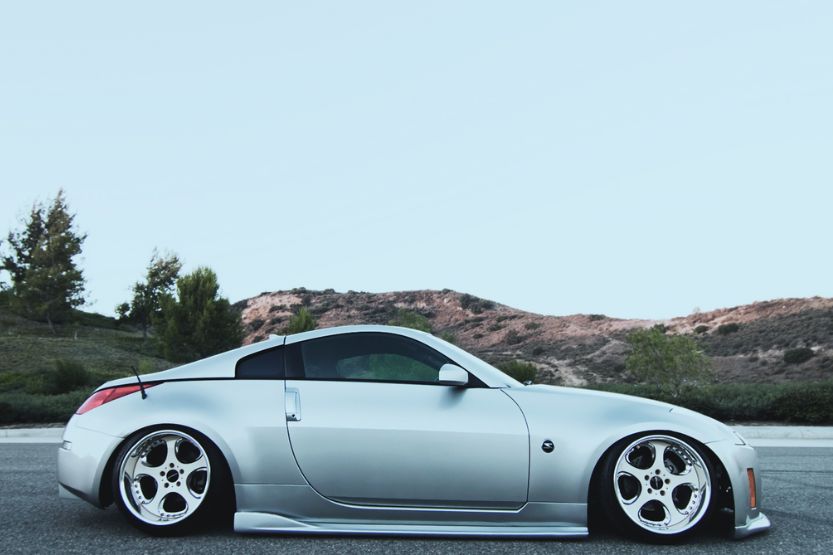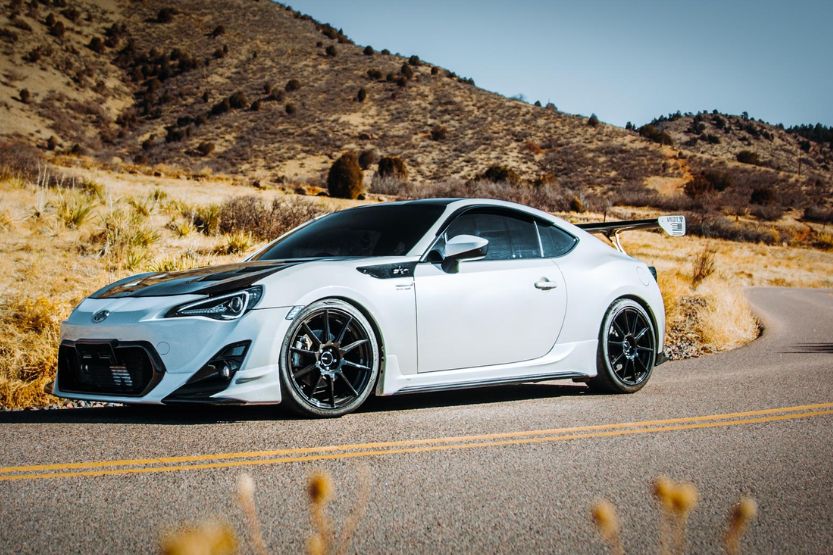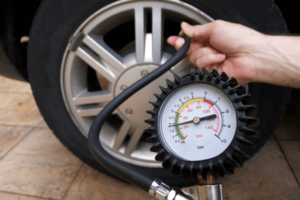When you want to modify a car, one of the most important things to focus on is the suspension. Why so? Because it has a significant impact on your car’s handling. Now, you often hear the term “static” when one lowers the suspension of their vehicle, but what exactly is a static car?
The term “static” refers to the chassis of your car. It means that your vehicle is on coil-over suspension and is at a fixed ride height, with undercarriages that do not have “Smart Air” suspension and cannot easily be raised or lowered. Therefore, you use coil overs to lift and lower the suspension. You can also use airbags, which are excellent for keeping in your car.
Read on to learn more about a static car and whether or not it is a better option than a bagged car.
What Is a Static Car?

Has a Fixed Coil-over Suspension and Ride Height
When you describe a car as “static,” its coil-over suspension and ride height is fixed. So, a simple button click won’t change the height of your vehicle.
Coil-overs Have Been Around Longer Than Air Suspensions
Coil-overs have been around longer than air suspensions, and some coil-over systems are expensive. While most people who buy coilovers do so to lower the car to improve its appearance, there is much more to it.
You can do a rebound, dampening, and even some camber adjustments with coil overs.
Allows Suspension Customization
Going static allows you to customize your suspension to your specifications without breaking the bank because there are options for everyone, with low-end coil-overs starting at about $500, mid-range coil-overs at about $1,000, and high-end coil-overs at about $2,000.
Lowered Cars Are Easier to Handle
In general, lowered cars are designed to handle better. When a vehicle is on a wide track, lowering the center of gravity results in better handling for the driver.
For static cars, however, the opposite is true. Yes, static cars have lowered suspension, but doing so takes so much more work that you lose a remarkable amount of handling flexibility. It is only done for aesthetic purposes.
Most lowered cars are vulnerable to damage because they are parked so low to the ground. However, their cool, slick appearance tempts many gearheads to modify their vehicles.
How to Stance Your Car
A static stance is one in which the height of the vehicle’s suspension remains constant. You can modify the suspension setup by adding coil overs or lowering springs:
1. Coil-overs
Most Common Method
This is, by far, the most common method for going static.
Most car professionals and enthusiasts believe it to be a much better option despite being slightly more expensive than lowering your springs. In other words, this is your best bet if “street credit” is what you are after. Most die-hard static fans, of which there are thousands, love to do this.
Uses Adjustable Coil-overs Rather Than the Car’s Stock Coil Springs
The coil-over suspension system uses adjustable coil-overs in place of a car’s stock coil springs. When you apply pressure to the coil-over, you can alter the ride height and stiffness of the vehicle.
Provide More Stability and Handling at High Speeds
If you are a performance fan, you will love coil-over suspensions because they offer more adjustability than stock suspension systems. They can also provide better stability and handling at high speeds. They can be pricey, but you must know how to set them up properly.
Starting Price
Although the starting price for coil-over suspension systems can vary greatly, it usually hovers around $500. You can spend well more than $2000 on some high-end systems. It is essential to consider your budget when you want to improve your car’s suspension.
You can only go down one height with your coil-over suspension so that your stance remains static. But, if you jack it up to the height you want, your stance will not be as static as it should be.
Keep in mind that going static, you may experience some issues when you lower your car to a certain height. This includes pebbles, branches, and squirrels slamming the front end of your vehicle.
Pros
- The majority of the “hardcore” community prefers this method,
- A reasonably priced way to get a static vehicle,
- You have some control over your car when you want to change its height.
Cons
- Limitations on how much you can change the height of your car,
- You may encounter handling difficulties,
- Speed bumps.
2. Lowering Springs
Most Economical Option
This is the most economical method of going static and lowering your car. It can potentially enhance the performance and handling of your vehicle. You will need to choose high-quality springs for this thing as they come in many different varieties.
Ensure the New Springs Work with the Car’s Struts and Shock Absorbers
Moreover, it would help to consider your car’s weight and suspension system when choosing the springs. Ensure the new springs work with your struts and shock absorbers.
Consult a Qualified Installer or Manufacturer
Otherwise, you can always check with a qualified installer or manufacturer if you are unsure which springs are best for your car.
Keep in mind that you will be stuck with the suspension after lowering your springs until you make a change. As such, you can use sports dampers as the stock shocks on your car probably will not be able to handle a lower spring.
If you do not do this, your suspension might blow out as you drive at the lowest possible speed.
Pros
- The most affordable method for getting a static car,
- Relatively simple to make changes.
Cons
- May potentially sustain permanent damage to the car over time,
- You will probably need to buy aftermarket shocks.
Again, what is a static car? Static refers to the condition of the car’s chassis. A static car does not have a smart air suspension. Also, you cannot change your car’s height quickly.
So, Which One Is Better: Coil-overs or Springs?

It all comes down to installment methods and what your budget is. Coil-overs can offer a better ride quality and adjustability than lowering springs, but only when you tune them properly.
Lowering springs, while less adjustable, are not that complicated to install, let alone more affordable. They offer a smaller drop-in ride height than coil overs as well.
Choose coil overs if you want the most adjustability and ride quality. Lowering springs are the most affordable option, offering a reasonable height reduction.
Whatever option you decide on, always seek professional advice before modifying your car. They can always help you make the best decision for your vehicle and guarantee a secure installation.
Understanding the Static Ride Height
The ride height (in millimeters or inches) determines how high the chassis is above the ground. You can configure static ride height in your garage. The dynamic ride height can change during a lap, like when your car hits a curbstone or the springs get compressed by downforce:
Does Alignment Impact the Static Ride Height?
Your ride height will usually change very slightly after an alignment because your tire position and pressure will be adjusted. Still, alignment can never cause significant variations in your car’s ride height.
How Do You Determine the Static Ride Height of Your Car?
The static ride height of your car is its height when it is parked, and the suspension is set to its ideal position. The tire’s diameter determines the front suspension’s proper welding angle, shock length, frame angle, engine angle, and ground clearance.
How Full Should the Fuel Tank Be to Measure the Ride Height Accurately?
For accurate measurements, there typically must be between 1/2 and 3/4 of the fuel level. You might even want to simulate the weight of the driver in some lighter vehicles.
Above all, ensure no cargo would not usually be in the vehicle.
Is a Static Car Better Than a Bagged One?
Bagged Cars Are Equipped with an Air Suspension
Bagged cars have an air suspension, allowing you to change the ride height quickly. Most people in the automotive industry love to use air suspensions. Now, those in favor of “static” usually refer to the air suspension as a “simple solution” or “going the easy way.”
Allows You to Change the Ride Height Quickly
People use air suspension for convenience and fine-tuning fitment because you can change ride height while driving.
If you’re at ride height and encounter a bump or must go on a steep road, you can “air up” from your controller, and you are good to go.
Starting Price
With options starting at about $700, air suspension has become more and more popular over the last few years. It also continues to improve in terms of handling and performance.
Offers More Flexibility and Convenience
Air suspension setups offer much more flexibility and convenience than coil-overs or springs when you go static. It is an excellent option if you want to enhance the handling and performance of your vehicle.
Expensive to Maintain and Install
However, installing and maintaining them can be costly, and you will need to replace the entire system if one of the airbags malfunctions.
Static Setups Do Not Use Airbags
On the other hand, static setups do not use airbags. They use coil-over suspensions and lowering springs to support your car. This type of suspension is more common and less expensive to install. It is also more reliable than airbags because fewer things can go wrong.
Static Vs Bagged Car Stance: Difference, Pros, and Cons
Static or Bagged: Which One Is Better for Your Car?

That depends on your needs and budget. A bagged suspension is the best option if you want a comfortable ride and want to display your car at car shows.
A static suspension is a better choice if you’re looking for something more reliable and reasonably priced.
Ask yourself the following questions:
1. How Reliable Do I Want the Ride to Be?
No adjustable suspension is fully reliable or maintenance-free. You may experience no issues for a long time, but eventually, you will. In other words, no suspension that cycles up and down will ever be 100% faultless throughout its lifetime.
With a static setup, the risk remains low when lowering your car.
Sure, shocks can become worn out over time, and things can go wrong, but they do so simply because your car is so low and not because there is a problem with the suspension itself. So, it all comes down to the ride height. Keep that in mind.
2. What Is My Budget?
There is a wide range of static drop kits, coil-overs, and airbag systems. Static drops are very affordable. Coil-overs cost around $500 for a car, while airbags may even cost more.
Before making any vehicle changes, you must consider your financial situation.
What if you have the resources to do either, though? That brings us to our third point, which is:
3. What Do I Want to Do with the Ride?
Consider using coil-overs or lowering springs if performance or handling are your top priorities. Airbags are the way to go if you want to drag a frame or body.
And lower your car only if you want to make it look even. It is fair to say that static vehicles are enjoying a resurgence these days. Choose your course of action based on what is best for you.
Static cars are not for you if you want an aesthetic upgrade.
When you go static, it usually means that you are not going to drive your car often, and you want to show off to the public.
Conclusion – What Is a Static Car? Is It Better Than Bagged?
A static car is one with a coil-over suspension or springs with a fixed ride height. Coil-overs have been around for a very long time, and there is a lot more to them than simply lowering your car to make it look better.
They have a significant impact on the handling of your car. Bagged cars, on the other hand, use an air suspension.
Air suspensions are popular in the car industry as they offer more adjustability. So, static vs. bagged: which one is better? A bagged car will provide a comfortable ride and better handling. Go static if you are looking for a more reliable and inexpensive option.
Read next:





![Magnaflow Vs Flowmaster Exhaust System [Which Is Better?] magnaflow vs flowmaster](https://roadsumo.com/wp-content/uploads/2021/05/magnaflow-vs-flowmaster-150x150.jpg)



